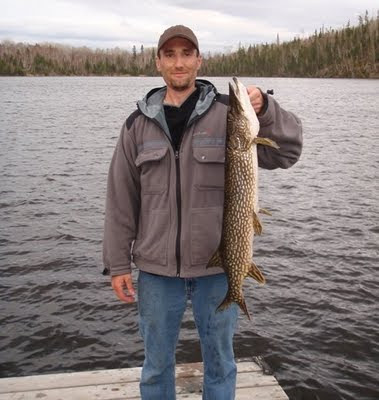
Most people would call this a depthfinder and they're common sights at Bow Narrows Camp. In fact I would say the majority of our guests bring them.
But to some people, it's a fishfinder and that's what they try to do with it, find fish.
The difference is that the first group goes fishing and uses the depthfinder to fish at a particular depth. The second group goes driving around looking at the fishfinder to tell them where to fish.
There's not much difference between the two when the fish -- read this, walleyes -- are at 16 feet or deeper because then they show up on the depthfinder/fishfinder.
The problem arises when the fish are shallower than that which they usually are on Red Lake for the first couple of months. The guys with the fishfinders can't find anything until they get over deep water, then they can see fish. There they are, schools of fish suspended half way to the bottom in 50-100 feet of water. They then try everything in the tacklebox but with no success. That's because those lovely marks on their screens are tulibees, not walleyes. Tulibees are lake herring and can be difficult to hook.
The walleyes are back in the shallow bays on the windy shores in probably 8-12 feet of water. Anglers who went trolling at this depth, perhaps using their depthfinders as a guide, did well. The guys with the fishfinders didn't even try there because they "didn't mark anything."
The fish were there; they just didn't show up on the fishfinder either because the transducer "cone angle" was too narrow in the shallow water or because the fish moved away from the boat momentarily as it passed overhead.
For people who are "hooked" on using a fishfinder, I suggest they come from mid-July to the end of the season because they will be able to "see" walleyes on their fishfinders. There will be some in the shallows that they can't see, especially from mid-July to mid-August, but there will be some in the deeper places too.
If you don't think there are people addicted to using fishfinders, consider the following.
We once had a guest who was a lake trout specialist and who returned home to the Midwest without even attempting to fish at camp when he discovered that one of his four on-board fishfinders wasn't working. True story.
Click to go back to our website:
Click to see the latest on the blog:










